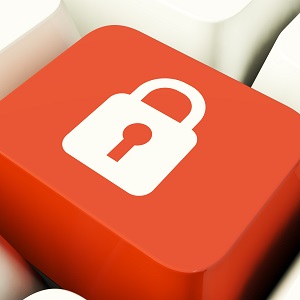Internet use, cloud and remote working, along with e-Commerce, are still booming – and any type of online presence is an excellent way to increase your organisation’s operational effectiveness, visibility and scope, boost sales, grow your client base and enhance your reputation. The internet has offered us the possibility to work wherever we choose, keeping in contact with our team, marketing ourselves and updating our web pages on the move. Despite the huge benefits however, there are risks. A multi-faceted online presence means that many organisations have multiple accounts for the different tools they use. Statistics suggest![]() that the average internet user in the UK has a staggering 118 online accounts. Online business integrity is paramount, and if you fail to protect both yourself and your clients the reputation the online world has allowed you to build so rapidly could plummet just as quickly.
that the average internet user in the UK has a staggering 118 online accounts. Online business integrity is paramount, and if you fail to protect both yourself and your clients the reputation the online world has allowed you to build so rapidly could plummet just as quickly.
Fortunately, you don’t need to be a tech guru to protect yourself and your clients online, and it need not be expensive either. There are a number of simple steps you can take to protect both your organisation and any online stakeholders. Here are our top tips to keep yourself secure when working, marketing or selling online.
1. Start with the basics
Many business owners spend a great deal of time and money on complicated encryption and authentication software but forget to carry out some basic housekeeping tasks on their own PC which could allow hackers to access sensitive client data by hacking into their own system. The very best way to protect yourself against software vulnerabilities is to ensure that you keep on top of updates for your software, web browser and operating system. Enable automatic updates for programmes wherever you can and use Firefox or Chrome when browsing, which will update automatically.
2. Don’t underestimate the importance of protecting your passwords
Protect your passwords, and change them regularly. Check that your passwords are strong and ensure you use a different password for each site, application or programme. If you have difficulty remembering multiple passwords, it may be worth considering using a password manager![]() such as KeePass or 1Password. Imagine a virtual vault for all your passwords. The beauty of such products is they which will not only generate strong passwords on your behalf but will also store them in an encrypted vault for that inevitable moment when you forget them.
such as KeePass or 1Password. Imagine a virtual vault for all your passwords. The beauty of such products is they which will not only generate strong passwords on your behalf but will also store them in an encrypted vault for that inevitable moment when you forget them.
3. Make use of encryption for every area of your website accessible by the public
Your web platforms have most likely protected any personal information your clients share automatically using SSL encryption, but your clients could still be vulnerable when browsing other pages. Ensure that every page of your website is protected by activating the SSL certificates in the account management area of your store – almost all web platforms will allow you to enable SSL encryption but in many cases it is not activated automatically. Once activated your clients will be browsing securely using encrypted HTTPs.
4. Layer up
Provide an extra layer of protection at the point of login by using single-use authentication codes delivered as a text message. Similar to the logic behind having a bank card and a pin, the two-step approach means if someone discovers your password they would also have to have access to your phone to enable login. You can use two-step login for your own logins and for your clients. Most web platforms will already have this functionality built in – check with your host for further details.
5. Don’t forget the possibility of physical access to your devices
If your laptop, mobile or tablet were stolen it would be relatively easy to access your device. Make sure you have paid attention to the basics such as putting a lock on your phone and disabling autofill for passwords. And encrypt, encrypt, encrypt! Select the encrypt option under the security settings on your phone and download an encryption programme to your PC, such as BitLocker. This ensures data can’t be manually extracted from your devices by ‘hiding it’ so that it cannot be read without a password.
The bottom line
Whilst hackers are continually developing new ways to attack organisations online, and the speed at which hackers can move means security is a continually evolving problem, following the simple steps above can go a long way to ensuring a safe and enjoyable browsing experience for your clients. A salient point – don’t forget to advertise the security of your site. With high profile security breaches receiving so much coverage in the news of late online clients have become very savvy as a result – they will shy away from sites that don’t guarantee their security. Selling yourself as a safe pair of hands online can pay dividends when attracting and keeping a loyal online following.
